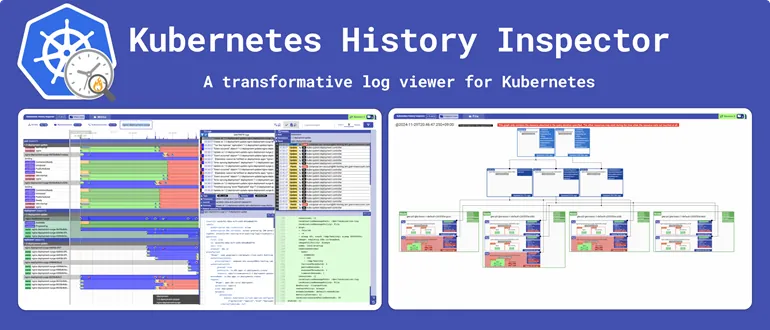
Unleashing the Power of Google Cloud's K8s Cluster History Inspector: Revolutionizing Kubernetes Troubleshooting
2025-03-24
Author: Yu
Why Are Cluster Logs So Important?
Cluster logs are the backbone of operational insights in cloud-native systems, maintaining a comprehensive record of resource operations, configuration changes, and critical error messages. They serve as a crucial tool for those trying to unravel the complexities within a Kubernetes cluster or even within traditional enterprise networks.
The Significance of Chronological Logs
Google Cloud's KHI distinguishes itself by uniquely visualizing cluster logs in chronological order. This chronological analysis is pivotal; it not only helps ascertain the sequence of events (like A leading to B, and then C) but also provides a framework for diagnosing issues—especially when events overlap or occur simultaneously. Understanding these relationships is crucial; without a clear timeline, troubleshooting often becomes a tedious guessing game.
The Complex Nature of Causal Relationships
As Tokyo-based Google Cloud engineers Kakeru Ishii and Takeie Torinomi explain, simply accumulating logs isn’t enough. The true challenge lies in effectively analyzing these logs, as Kubernetes issues often stem from a series of interrelated events rather than a single glaring error. “A moderately sized Kubernetes cluster can generate vast amounts of log data within moments, making manual reviews a Herculean task,” they note.
Introducing Kubernetes History Inspector (KHI)
To tackle these challenges, KHI was born out of extensive analyses of user environments and support tickets. This innovative tool extracts "state information" from Google Cloud Logging—allowing cloud engineers to visualize and interpret log data without the need for complex commands. The result? An intuitive and visually engaging timeline interface that provides clarity in troubleshooting efforts.
Effortless Log Visualization
What makes KHI particularly appealing is its simplicity. There’s no complicated setup; it seamlessly utilizes existing logs to generate necessary queries for analysis. Users can customize their experience by selecting specific parameters, such as cluster type and time range, thus transforming what could be an arduous task into a straightforward visualization process.
Comprehensive Insights: Microscopic to Macroscopic Views
Dissecting its capabilities further, KHI aims to enhance existing log analysis functions found in platforms like Google Kubernetes Engine (GKE) and AWS's Elastic Kubernetes Service (EKS). The tool offers both macroscopic and microscopic perspectives—providing a broad overview of the Kubernetes environment while allowing deep dives into raw logs and historical changes.
However, the engineers behind KHI assert that while it significantly elevates the log analysis process, it doesn't replace the need for skilled human understanding. Rather, it acts as a powerful guide for engineers navigating the complex world of Kubernetes.
A New Era in Cloud Troubleshooting
In summary, Google Cloud's Kubernetes History Inspector emerges as a highly effective tool for organizations striving to enhance their Kubernetes troubleshooting capabilities. By transforming extensive volumes of log data into an interactive timeline, KHI equips technical teams with the insights needed to tackle multifaceted issues across their clusters. As Kubernetes continues to dominate the cloud-native landscape, tools like KHI are more crucial than ever—turning chaos into coherence and ensuring a smoother operational journey for engineers and developers alike.
Are you ready to revolutionize your Kubernetes experience with KHI? Explore it now on GitHub!


 Brasil (PT)
Brasil (PT)
 Canada (EN)
Canada (EN)
 Chile (ES)
Chile (ES)
 Česko (CS)
Česko (CS)
 대한민국 (KO)
대한민국 (KO)
 España (ES)
España (ES)
 France (FR)
France (FR)
 Hong Kong (EN)
Hong Kong (EN)
 Italia (IT)
Italia (IT)
 日本 (JA)
日本 (JA)
 Magyarország (HU)
Magyarország (HU)
 Norge (NO)
Norge (NO)
 Polska (PL)
Polska (PL)
 Schweiz (DE)
Schweiz (DE)
 Singapore (EN)
Singapore (EN)
 Sverige (SV)
Sverige (SV)
 Suomi (FI)
Suomi (FI)
 Türkiye (TR)
Türkiye (TR)
 الإمارات العربية المتحدة (AR)
الإمارات العربية المتحدة (AR)